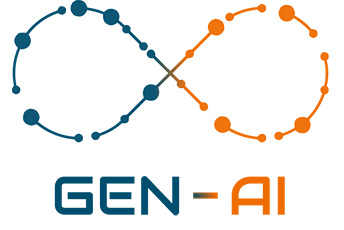Detection of Emotions and Intentions in Student Interactions Using the REST API /virtualbot/sentiment/sentiment_analysis
Market: Online education platforms, universities, educational centers.
Description:
The REST API /virtualbot/sentiment/sentiment_analysis, utilizing advanced OCR and a multimodal LLM, allows real-time analysis of students’ emotions and intentions during their interaction with online learning platforms. Emotion analysis helps identify whether students are confused, frustrated, or satisfied with the course content, while intention analysis detects the level of student engagement, providing instructors and administrators with clear insights into the effectiveness of the educational content and the emotional state of the students.
The system can process written comments, quiz responses, and forum participation to analyze students’ emotions and intentions. With this information, platforms can personalize learning based on students’ emotional needs, improving the educational experience and optimizing content.
Specific Advantages:
- Improving Learning Personalization:
– Real-Time Emotion Detection: The system identifies emotions such as frustration or confusion in students, allowing instructors to adjust course content to address these emotions and improve understanding of the material.
– Content Adjustment Based on Intentions: Intention analysis detects whether students are engaged or need more motivation to continue progressing in the course. With this information, platforms can personalize educational content to better meet each student’s needs.
- Optimization of Educational Content:
– Adjusting Teaching Pace: By detecting negative emotions such as frustration, educators can adjust the teaching pace or provide additional support materials to help students grasp the content, preventing them from falling behind.
– Content Tailored to Emotional Needs: Continuous emotion analysis allows educational content to be adapted to be more accessible and motivating, aligning educational resources with students’ predominant emotions.
- Enhancing Student Engagement and Retention:
– Monitoring Engagement Levels: Intention analysis helps detect whether students are engaged with the course or need more interaction or motivation. This allows administrators to intervene promptly to prevent dropout.
– Increasing Active Participation: By adjusting content based on students’ emotions and intentions, platforms can increase active participation and interaction with the content, enhancing the learning experience and improving course completion rates.
- Early Detection of Academic Issues:
– Identifying At-Risk Students: The system can detect recurring negative emotions such as stress or frustration, enabling administrators and educators to identify students at risk of dropping out or facing performance issues.
– Proactive Intervention: By identifying students experiencing emotional difficulties or lack of engagement, platforms can offer personalized tutoring, additional materials, or course adjustments to help them improve their academic performance.
- Improving Student Satisfaction:
– Emotion-Based Empathetic Responses: By detecting students’ emotions, platforms can adjust their communication tone and provide more empathetic responses, enhancing the learning experience and increasing satisfaction with courses.
– Adapting Courses to Emotional Needs: The ability to adjust content and pedagogical approaches based on students’ emotions contributes to the continuous improvement of course quality and fosters a more satisfying and enriching educational experience.
- Evaluating Content Effectiveness:
– Measuring Emotional Impact of Content: Emotion analysis allows for evaluating how students emotionally react to educational content, enabling instructors to adjust teaching materials to improve lesson effectiveness.
– Adjusting Pedagogical Strategies: Educators can adapt their teaching strategies based on detected emotions and intentions, optimizing teaching approaches according to students’ emotional and cognitive needs.
Key System Integrations:
- Learning Management Systems (LMS):
– Recommended Platforms: Moodle, Blackboard, Canvas.
– How It Works: The system integrates with LMS platforms to analyze student interactions with course content in real time, adjusting personalization and improving engagement based on detected emotions and intentions.
- Educational Data Analytics Tools:
– Recommended Platforms: Power BI, Google Analytics, Tableau.
– How It Works: Emotion and intention data can be integrated into data analytics tools to generate detailed reports on student behavior, optimizing course design based on their emotions and needs.
- Educational Communication Platforms:
– Recommended Platforms: Microsoft Teams, Zoom, Google Meet.
– How It Works: The system can integrate with video conferencing and educational communication platforms to detect emotions and intentions during online classes, allowing instructors to adjust their teaching approach in real-time interactions.
- Personalized Tutoring Platforms:
– Recommended Platforms: Tutor.com, Chegg Tutors.
– How It Works: By integrating emotion and intention analysis, these platforms can personalize tutoring content and provide recommendations tailored to the student’s emotions, improving academic performance.
Conclusion:
The REST API /virtualbot/sentiment/sentiment_analysis offers a key tool for online education platforms, universities, and educational centers by enabling real-time analysis of students’ emotions and intentions during their course interactions. By improving learning personalization, detecting negative emotions, and monitoring student engagement, educational platforms can optimize content, improve student satisfaction, and increase course completion rates, all while providing a learning experience more tailored to students’ emotional needs.


